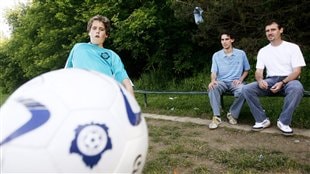Soccer is the talk of the world these days. Millions are watching the World Cup competition in Brazil, and while it won’t draw an equal amount of interest, millions will be watching the Women’s World Cup in Canada in 2015.
But as with American football, hockey and a growing number of other sports, there is growing concern about concussions in soccer–notably the ill-effects of heading a soccer ball.

Recent statistics show that 30 percent of concussions in youth soccer come from heading or trying to head and crashing into another player.
This week, the Boston-based Sports Legacy Institute and the Institute of Sports Law and Ethics based in Santa Clara, California mounted a new concussion safety campaign in the United States to delay the use of headers by US players until high school age. Current guidelines prohibit heading by players before the age of 10 though the rule is not strictly enforced in many areas.
The launch came on the heels of a visit to Brazil by some members of the 1999 women’s team that won the World Cup. Those players wanted something done about concussions suffered by young people while playing soccer.

Soccer is played widely in Canada and to find out how Canada is dealing with the issue, RCI’s Terry Haig spoke with Dr. Kevin Gordon. He is a pediatric neurologist at the IWK Health Centre in Halifax and member of Canada Soccer’s sport medicine committee.
Here is their conversation.Listen







For reasons beyond our control, and for an undetermined period of time, our comment section is now closed. However, our social networks remain open to your contributions.